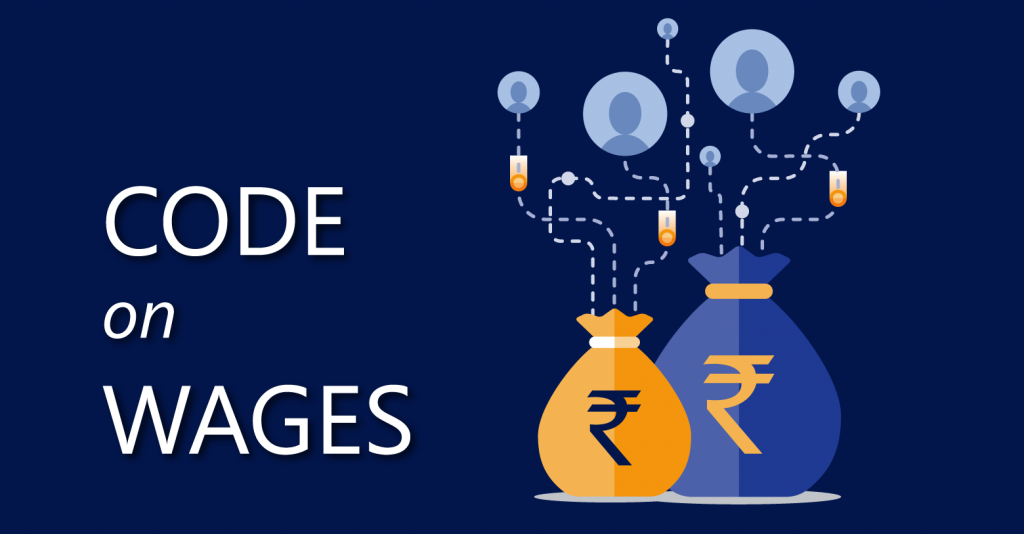
Animay Singh
Biography

Introduction
The Code on Wages, 2019 was passed by both Houses of Parliament last year. However, its draft Rules were circulated to receive recommendations and objections from the public on July 10th, 2020. From a technical perspective, the Code on Wages is already a law, but it has not been brought into force through a notification in the Official Gazette as per Section-1(3) of the Code.
This article examines the Code on Wages, 2019 read with its draft Central Rules that supersede the following set of rules: –
- Payment of Wages (Procedure) Rules, 1937
- Payment of Wages (Nomination) Rules, 2009
- Minimum Wages (Central) Rules, 1950
- Minimum Wages (Central Advisory Board) Rules, 2011
- Ease of Compliance to Maintain Register under various Labour Laws Rules, 2017 to the extent that these rules are made in exercise of the powers conferred by Section-13 of the Equal Remuneration Act, 1976, Section-29 and 30 of the Minimum Wages Act, 1948 and Section-26 of the Payment of Wages Act, 1936
- Payment of Bonus Rules, 1975
- Equal Remuneration Rules, 1976
- Central Advisory Committee on Equal Remuneration Rules, 1991
The changes in the draft Rules have been analysed to ascertain their potential impact on compliance, thus giving employers, employees, and HR professionals a general idea of what can be expected.
Comparative Analysis of Compliance Changes Under Code on Wages
| Compliances | Before | After |
| Registers | A total of 10 Registers had to be maintained: -Four Registers under the Minimum Wages Act, 1948Two registers under the Payment of Wages Act, 1936Three registers under the Payment of Bonus Act, 1965One Register under the Equal Remuneration Act, 1976 | Two registers are required to be maintained: – Employee Register under Form-IVRegister of Wages, Overtime, Fines, Deductions for damage and loss under Form-I |
| Returns | A total of 4 returns had to be submitted, one each under the Minimum Wages, Payment of Wages, Payment of Bonus and Equal Remuneration Acts respectively | A single return to be filed that covers all the components under the different enactments |
| Consequences | Penalties ranged from a lower range of Rs. 500 to upper range of Rs. 20,000 with imprisonment of 6 months to 1 year | Enhanced penalties of up to 1 lakh have been provided for with imprisonment of up to 3 months |
Changes Proposed in Draft Central Rules of Code on Wages, 2019
| Title | Change Brought In |
| Rule-3 (Manner of Calculating Minimum Rate of Wages) | Shall be fixed on a day basis according to the criteria fixed by Supreme Court judgment in Workmen Represented by Secretary vs. Management of Raptakos Brett & Co. Ltd. on recommendations of 15th Indian Labour Conference (ILC) |
| Rule-4 (Geographical break-up) | The Minimum rates would be fixed by the Central Govt. by dividing each geographical area into three categories: – metropolitan area, non-metropolitan area, and rural area |
| Rule-5 | The Dearness Allowance (DA) would be revised once before 1st April and then before 1st October in every year on the minimum wages payable to the employees |
| Rule-6 | Working hours have been changed, the normal working day shall be comprised of eight hours of work and one or more intervals of rest which in total shall not exceed one hour with spread over of not more than 12 hours on any day inclusive of the interval of rest |
| Rule-7 | Rest day (weekly holiday) an employee shall be allowed a day of rest every week which shall ordinarily be Sunday but with an option to the employer to fix any other day of the week as the rest day |
| Rule-11 | Fixing national floor wage, the Central Govt. would fix the floor wage by considering the minimum living standards including the food, clothing, housing, and any other factors in consultation with State Govts. The Govt. may revise floor wages thus fixed at an interval not exceeding five years |
| Chapter-IV (Rule 13-20) | This chapter prescribes various compliances for Payment of Wages including deductions, recovery, an exhibition of notice, intimation to Inspector-cum-Facilitator, etc. |
| Chapter-V (Rule 21-27) | Payment of Bonus- (i) Calculation of set on or set off for the sixth & seventh accounting year as per Schedule A, (ii) Computation of gross profits as per Schedule C, (iii) Further Deductions from Gross Profits as per Schedule B |
| Rule-55 | Fixing responsibility for timely payment of wages to the contractor on the principal employer |
| Rule-57 | The primary responsibility of payment of Bonus to Contract Workers is on the Contractor |
| Schedule E | Categorization of occupations of the employees into four: – unskilled, semi-skilled, skilled, and highly skilled |
Conclusion
From the above, it is clear that the Central Government wants to bring the law in consonance with the times. The change in the manner of calculation of minimum wages is tied to the recommendations of the Tripartite Committee of the 15th Indian Labour Conference (ILC). In the case of Workmen Represented by Secretary vs. Management of Reptakos Brett & Co. Ltd., the Supreme Court made a reference to these recommendations while dealing with a matter related to the reduction in the scheme of dearness allowance. The court noted that the scheme for fixation of minimum wages in India should be based on five norms: –
- Three consumption units for one earning excluding the earnings of women, children, and adolescents
- Minimum food requirement that is linked to net intake calories
- Clothing requirement at seventy-two yards per annum for an average working family of four
- House rent corresponding to a minimum is provided for under the Government’s Industrial Housing Scheme
- 20% of the total minimum wage for fuel, lighting, and other miscellaneous items
These norms were recognized in the 1991 judgment, and the current scheme provided by the Government is a modernised version based on the same. Working hours have been reduced from nine hours to eight hours a day which is in consonance with the globally recognized notion of an eight-hour workday. The National Floor Minimum Wage is backed by legal sanction with a prohibition on the State Government’s setting their minimum wages below this specified threshold.
The responsibility to pay timely wages to contractors and the obligation to pay the bonus to contract workers have been expressly placed on the principal employer and the contractor, respectively. The scheme of division of occupations into four based on their skill level is a departure from the complex scheme of scheduled employments that existed before the Code on Wages. However, the scheme under Schedule-E does not account for several changes in the nature of work, for example, it does not include occupations under the IT industry. This needs to be resolved by ensuring that Schedule-E is brought into consonance with contemporary modes of work.
The above changes indicate that there would be an overall increase in ease of compliance. However, the same depends on how State Governments incorporate these rules, if the States decide to replicate the Centre’s approach then compliance under the Code on Wages, 2019 will be simple and straightforward.
What are your thoughts on the changes brought in by the Code on Wages, 2019? Are the changes brought insufficient with regards to ease of compliance? Does there need to be any further reform in this domain?
Drop your thoughts in the comments below.
| Disclaimer: This blog is meant for informational purposes and discussion only. It contains only general information about legal matters. The information provided is not legal advice and should not be acted upon without seeking proper legal advice from a practicing attorney. Simpliance makes no representations or warranties in relation to the information on this article. |

Most of the corrupt practices will continue if wage code does not insist for unform and compulsory maintenance of wage registers for all purpose including ESIC, EPF, etc by employers and secondly all wages including bonus should be paid only through individual’s SB account only. Thirdly whatever recorded as wages in the wage register only should taken into balance sheet as wages for tax purpose. At the moment contractor salary, labour charges etc are claimed as wages for gst/IT purpose but not taken for compkiance under other labour laws
Merely introducing new wage code is not sufficient alone. Even in presence of strict laws, there are various unfair practices being followed by lakhs of employers of 1) not issuing appointment letters, 2) paying salary through cash 3) labours are being exploited for 12 hours duty 4) Employees not being paid minimum wages etc.
The complaint machanisam is complex and tedious that no employee dares to follow the same. Instead the appropriate authority should have a system in place to take action voluntarily.
These unfair practices being followed in absence of strict implementation. The authority takes action only only basis on complaint received, hence many employers ensure that no complaint is being made OR such complaints are resolved while in process.
Unless we do not have such security norms to ensure the implementation of labour laws, the benefit which government proposes, will not reach to the majority of employees.
One more point is that in some industries, the workers themselves are not willing to cover themselves under PF and ESI even though the employer are giving awareness of the benefits of the provisions. Then what is the stand by authorities because employers are always targeting the employers.